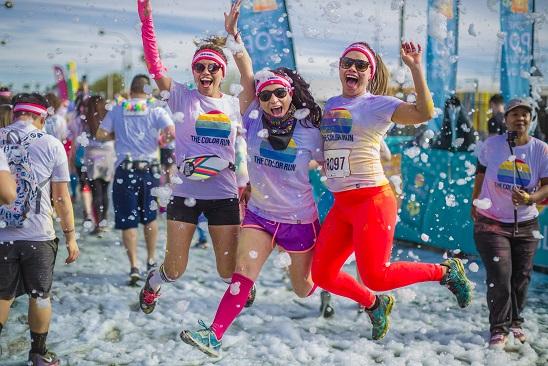
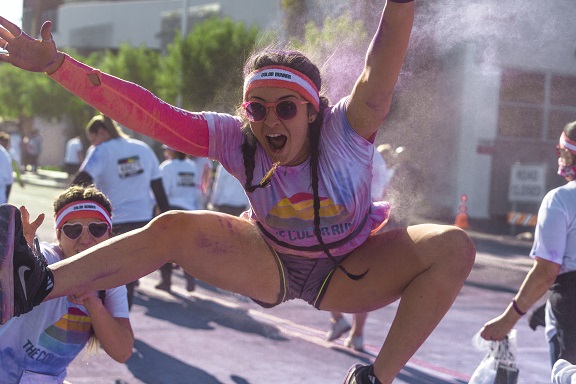
The Color Run (tagline: “the Happiest 5k on the Planet”) is an untimed 5K paint race where runners are showered with colored powder made of food-grade corn starch at stations along the run. Now the largest running series in the world, The Color Run has had a total registration of more than 6 million runners at more than 300 events in 35-plus countries in North America, South America, Europe, Asia, New Zealand, Australia, Africa and the United Arab Emirates.
The Color Run has used different themes to add variety; in the past, themes have included the Tropicolor World Tour, Shine Tour and Kaleidoscope Tour. It has also had a Color Run Night, with glow-in-the-dark powder, glowing color zones, black lights along the course and more. The current theme is the Color Run Dream Tour.
Sports Destination Management: The Color Run has quite a following. How long has it been around?
Jordyn Crowley: It has been around since 2012.
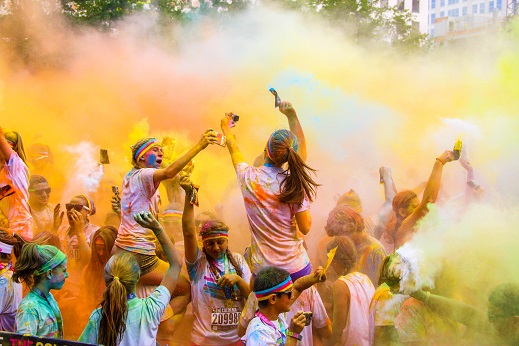
SDM: How many events do you do a year?
Eric King: This year, we are doing just over 55 Color Runs.
Editor’s note: A list of races can be found here
SDM: What is the average registration?
King: Registration varies quite a bit depending upon the city we’re in; for example, we’ll get more people in New York City than we would in Kalamazoo.
SDM: When you’re considering a city as a possible host, what do you look for?
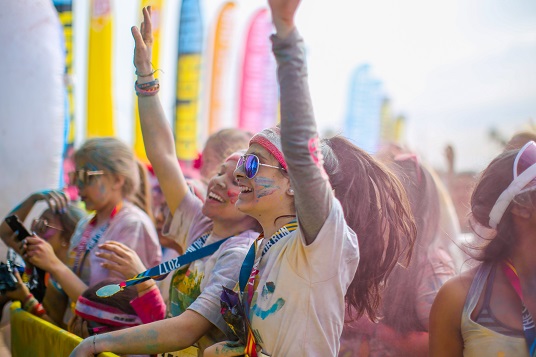
King: – Generally, the first thing we look for is population centers throughout the country. We identify the cities we’d like to take our event to, and we send out e-mails to gauge interest and get a feel for what’s going on there. If it looks good, we can move forward.
SDM: Is course selection and setup for a Color Run any different than it would be for a typical 5K?
King: We pay a lot of attention to the permitting process; our event is messy, after all, and when we first launched, not a lot of cities were excited about it. It took some arm-twisting to get cities to agree back then! Now, we’re in our fifth or sixth years at a lot of the locations. We have a very good reputation for producing events at a high level and for leaving cities clean and happy.
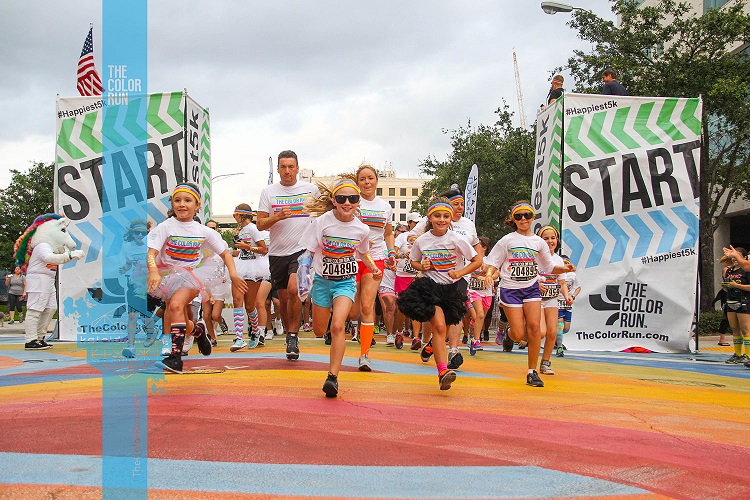
King: Yes, we identify different partners. Since our founding in 2012, we have donated more than $5 million from our events to charity.
SDM: What is the economic impact?
King: It’s really hard to tell. Ours is an educated guess but it depends on the city and how far people are willing to travel to participate. For example, in Omaha you’re going to have people traveling in and staying overnight, which greatly increases the economic impact.
SDM: So people do travel to attend these events?
King: Yes, we’re confident people travel in a good amount of the time. If you go into the city after a Color Run, you’ll see the whole area – places to eat and shops and stores – just littered with Color Run participants.
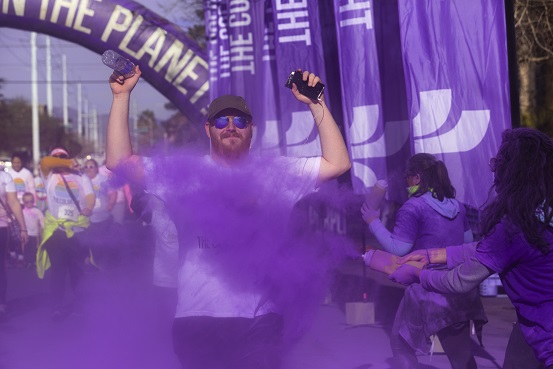
SDM: What are the demographics of the Color Run?
Crowley: Registration tends to lean more toward the female side, although we also see a lot of girls dragging their boyfriends alone. There are a lot of Millennials, and they’ll take advantage of the stops along the course that let them take photos, post to Instagram and so on. At the same time, you’ll also see parents jogging with strollers, grandparents with their kids and grandkids – we see everyone from babies to 90-year-olds.
SDM: How many people does it take to put on a Color Run?
King: From a staff perspective, we bring 15-25 people to each event. In terms of volunteers, we hope to get 100-200, but it depends on the number of participants. It’s definitely a chore to get that many people together.
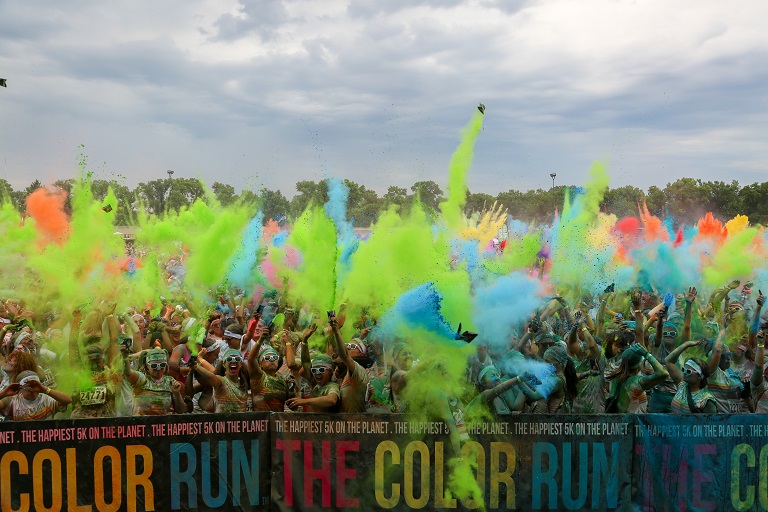
King: We’ve been blessed with some good partners and we work in a variety of ways. Sports commissions, conventions and visitors bureaus and local running groups are usually a good start. Because we have been in some cities for six years, we have our go-to people who have helped in the past. It’s never a cookie-cutter system, though; we work with the people who are there.
SDM: And it’s a non-competitive run.
King: Yes, it’s non-timed. We have considered doing a timed wave but haven’t done it yet.
Crowley: I think having it be non-timed breaks down the barrier that people think exist; to us, that’s a better way to get a lot of people who are doing this for the first time – and it’s working because we have a lot of them – maybe 50 to 60 percent of all runners in each event will not have done a race before. We even have stickers people can wear that say “This is my first 5K.”The Color Run has a reputation of being really friendly, fun and happy. I think it eliminates the judgment you might get – or that people think you might get – from a competitive event.
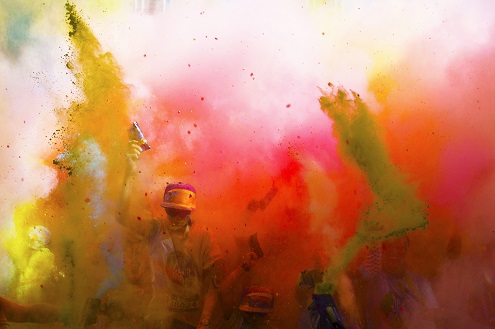
SDM: Do people participate in the Color Run and go on to other races?
Crowley: Oh, definitely. I would say we have been able to feed people into more competitive events and start them on the path to healthiness.
SDM: You make it a point to have a party atmosphere.
King: Oh, yes – we have a packet pickup party where our runners check in and get their shirt. That is an event in itself, and we hold that one or sometimes two days before the event itself, depending on the registration – which of course depends on the city and the location. We’ll add various vendors too. Ths year, we have a new station where people can color and personalize their running bib.
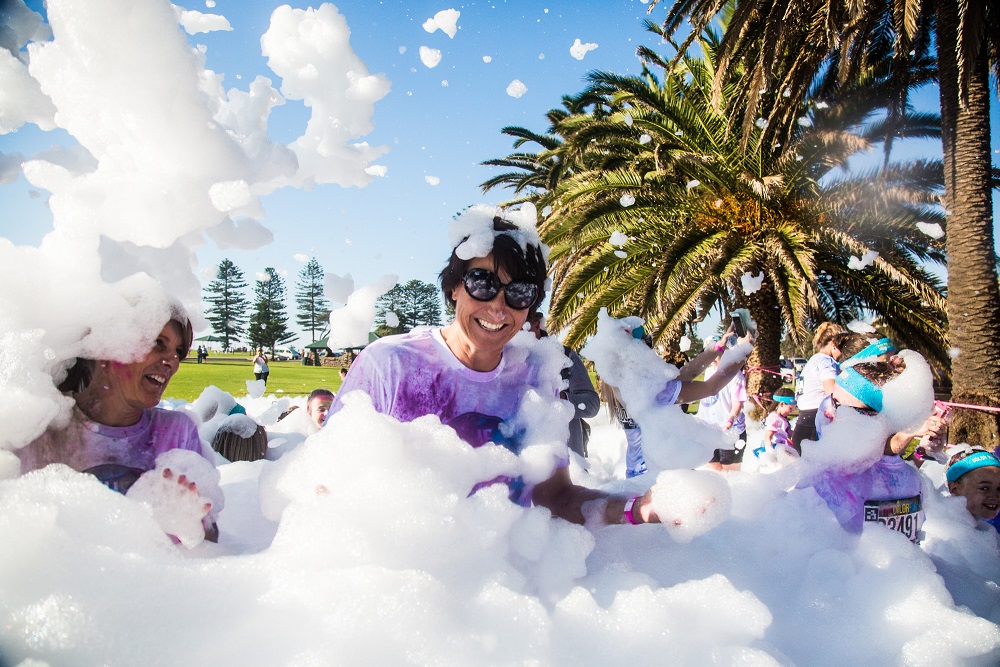
King: A lot like that.
Crowley: Then, after the race, there is a finish line festival. You get your medal and we have a D.J. and a stage set up. People hang out for hours and dance; they’ll stay much longer than the race itself. There are color throws and you wind up with some great photos. We’ll also have give-aways from our sponsors. At our New York City event, for example, we had people leaving with sample packages of laundry detergent, ice cream bars, potato chips, everything.
SDM: The event has obviously grown in reputation and recognition.
King: Yes, we couldn’t believe we’ve had the success we’ve had in such a short time. It is the single largest running event in the world.

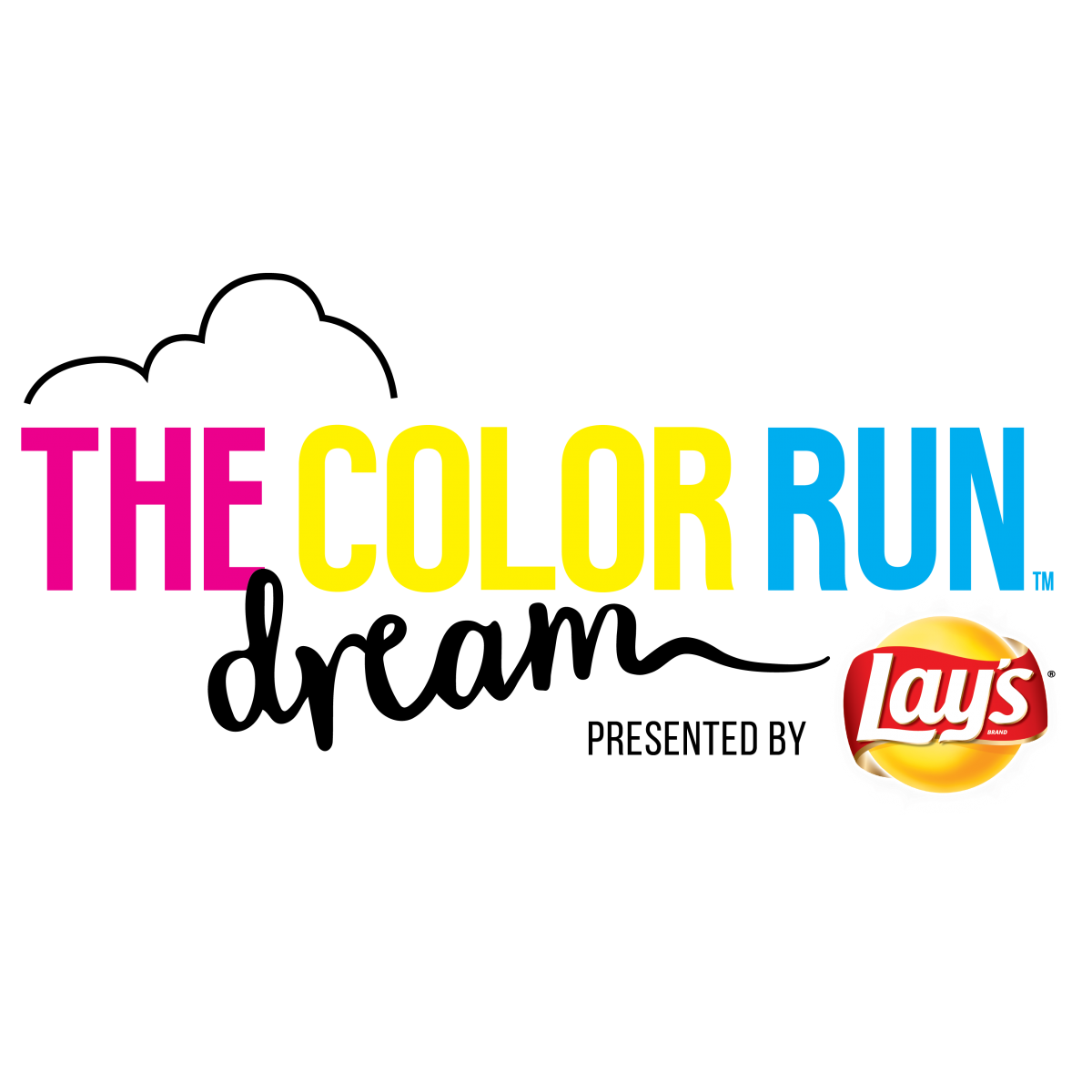 thecolorrun.com
thecolorrun.com